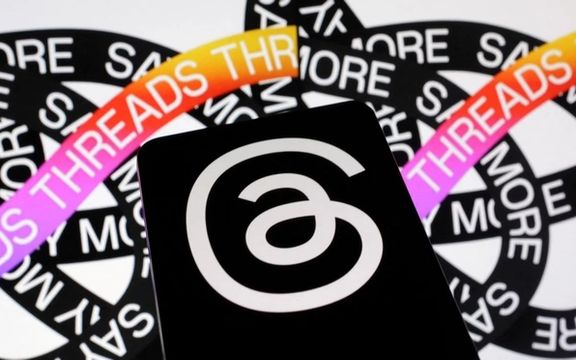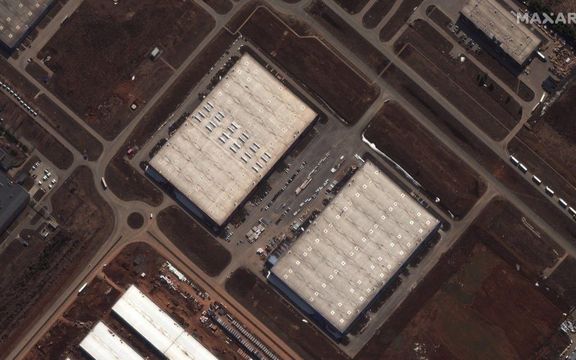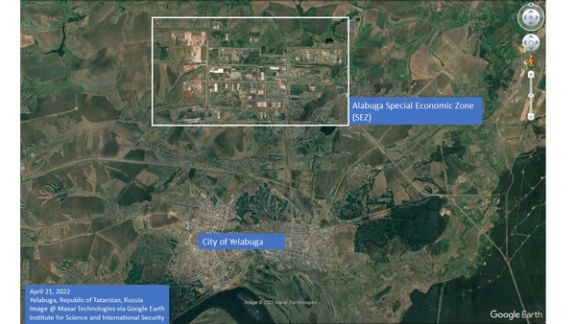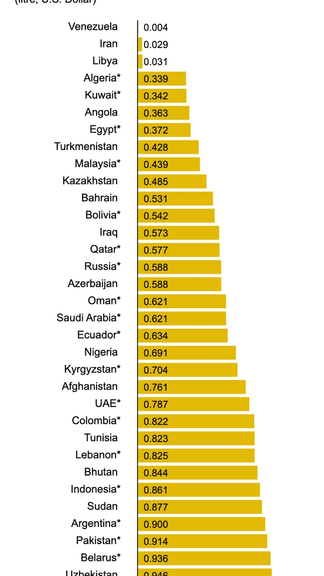Dissident Iranian Rapper Severely Tortured - Exclusive

Iranian rap artist Saman Seydi, better known as Saman Yasin, has been "severely tortured" in prison, Iran International has learned.

Iranian rap artist Saman Seydi, better known as Saman Yasin, has been "severely tortured" in prison, Iran International has learned.
Seydi was arrested in October 2022 during the anti-regime protests in Iran, and was handed a death sentence. However, his appeal against the sentence was accepted in December, and now he is expecting a retrial.
"During the interrogations, Saman was severely tortured to confess he was carrying weapons (when arrested). They threatened to arrest members of his family should he refuse to make the confession they demand," a source close to Seydi's family told Iran International.
The source said Saman had been "suspended in the air" in prison for three days so that he would be forced into confession.
Saman Yasin's retrial was supposed to be held on May 8, 2023. However, he has been left in limbo in Rajaeishahr Prison, west of Tehran, awaiting his court session without access to a lawyer.
The 25-year-old dissident rapper from the Kurdish-majority Kermanshah province in Western Iran, reportedly attempted suicide in prison by taking a large number of pills back in December.
While the Islamic Republic's Judiciary accepted the appeal against Saman Yasin's death sentence, he still faces the charge of acting against the country's national security and "waging war against God", which is punishable by capital punishment.

In the swiftest social media platform migration ever witnessed, millions of Iranian Twitter users have flocked to Threads following its launch on July 6.
Threads, a microblogging platform provided by Meta, the parent company of Instagram and Facebook, has attracted a significant number of Iranian users. Instagram, already a popular social media platform in Iran with over 24 million users according to state officials, may contribute a substantial user base to Threads. Moreover, many frustrated Twitter users, who have been displeased with recent ad-hoc changes on the platform, are also making the switch.
Twitter's implementation of new restrictions and changes, such as reducing the number of tweets users can read to 300 (although "verified" users paying a monthly fee have access to more), has drawn constant complaints from Iranian users. Although Twitter later increased the limit, the damage was already done, and many users began considering a move away from the platform.
Alternative options for Iranian users included Mastodon, which is less popular than Twitter, and Blue Sky, a platform in the beta stage that accepts new members by invitation only. Last week, many Iranians were searching for Blue Sky invite codes, although invitations are limited to one per current user every two weeks.

In 2020, Fars News Agency, affiliated with the IRGC, estimated that there were approximately 49 million Iranian accounts on Telegram, 47 million on Instagram, and 2 million on Twitter. Since then, the number of Twitter users must have significantly increased, especially during the anti-government protests in 2022 and 2023, during which the platform became a vital resource for debates and information sharing.
By mid-day London Time on Thursday, more than 20 million users had joined Threads, including between one and two million from Iran, according to UK-based Media Metrics Limited, which also said accurate metrics is challenging, as most Iranians use virtual private networks (VPNs) to conceal their location from the watchful eyes of repressive security forces. VPNs make it appear as if these users are based in countries other than Iran, where social media is strictly banned by the government.
A Threads user named Rasul Asadzadeh expressed in his first post, "From Yahoo! Messenger to Threads. Social media has provided us with a platform to voice our grievances. Hey Freedom! Give us back the echo of our voice. Our hair is turning white."
Meanwhile, in Tehran, by mid-day (early morning in London), when the number of Threads members reached ten million, a user going by the pseudonym Hazer Javabi stated, "Believe me, seven million of them are from Iran."
Tehran has concerns about the organizing and mobilizing power of social media, particularly in light of the increased number and strength of opposition groups and citizens opposing the regime since the nationwide protests in 2022.
Until late June, Twitter served as the primary online venue for Iranian political activity, with virtually every political group and politically engaged individual, regardless of affiliation or agenda, active on the platform. However, as of Thursday morning, many had migrated to Threads, perhaps permanently. Others plan to maintain their Twitter accounts for a while before figuring out how to transition their followers to Threads.
Twitter had been grappling with growing concerns about the presence of trolls and bots, as political tweets often featured vulgar language and insults. A Threads user named Parham Ghobadi wrote on Thursday, "Apparently, bots and the cyber army have not arrived here yet. It's still a healthy environment."
Despite the overwhelming welcome Threads has received, users familiar with social media dynamics and cultural and political nuances in Iran predict that Blue Sky, once it surpasses the hurdles of its beta phase, will likely emerge as the biggest winner in the microblogging market. They attribute this to owner Jack Dorsey's marketing expertise, as the co-founder and former CEO of Twitter. Additionally, many Iranian users find Instagram's advertising annoying, making them hopeful that Threads' marketing strategy will differ from that of Instagram.

The new head of the German Federal Office for Information Security (BSI) warned of a growing threat from Russian, Iranian and Chinese cyber-attacks.
In an interview with Süddeutsche Zeitung on Thursday, Claudia Plattner said the threat situation in the network is "bigger than ever". Germany as a European power and supporter of Ukraine is an "attractive target" for hacker groups, she added.
"The goals are espionage, destabilization and influence," said Plattner, who took office on July 1. “An increase in the number of attacks can also be observed from China and Iran.”
The German security authorities are concerned that pro-Russian activists, cybercriminals, and hacker groups from the Russian secret services are joining forces to attack Western systems, the report added.
Recently, websites of authorities and other important institutions have been paralyzed repeatedly. Many experts regard the fact that 5,800 wind turbines in Germany failed last spring as a result of a suspected Russian hacker attack.
The BSI head also called for the critical infrastructure in Germany to be better protected. Solutions are needed to "stop and fend off" attacks, she told Süddeutsche Zeitung, "just holding your hands up is not enough."
Federal Interior Minister Nancy Faeser (SPD) plans to give the Federal Criminal Police Office more powers so that it can actively defend against a hacker attack. Details of the plans are not yet known, but experts warn of the risks of interfering with third-party systems.

Russia is importing Iranian expertise for its drone factory being built to manufacture Russo-Iranian drones.
The factory in Russia’s Republic of Tatarstan, will be fully operational as early as next year, with recruitment in full force.
Several of the jobs posted since April for the site are seeking Farsi speakers, based on research by Airwars, a conflict monitoring group based at Goldsmiths, University of London.
The Iranian interpreters will be required to travel, perform simultaneous translation and translate technical documents, according to a report in the Financial Times.
Located in a business park near the town of Yelabuga, Moscow has converted an agricultural unmanned aerial vehicle maker to supply its war effort in Ukraine. Images show the vast complex is well underway.
Albatross, the company operating on the site has produced reconnaissance drones for President Vladimir Putin’s defense ministry, with roughly 50 delivered for combat in eastern Ukraine.
The factory is at the center of an expanding tech partnership with Tehran, whose expertise Moscow has relied on to establish a domestic drone-building capability to support its invasion and further skirt western sanctions.
Samuel Bendett, an expert on autonomous weaponry at the Center for Naval Analyses, told the Financial Times: “If Russia wants to do something covert with Iran, this is an advantageous location. It’s on the river that flows into the Volga, so you can bring parts by ship from Iran covertly.”
Iran has supplied Russia with hundreds of Shahed “kamikaze” loitering drones, which have been flown in swarms into Ukrainian infrastructure and neighborhoods. The investigation by FT and Airwars have not, however, found proof that a Shahed drone is being manufactured at the plant.
According to US intelligence, Moscow has procured hundreds of the suicide drones from Tehran. The White House claimed Alabuga was a still-expanding industrial site where an Iranian-Russian drone plant could become fully operational early next year.

Photos and videos from Russian social media and local media outlets indicate Albatross commenced some drone production at the site in January. Albatross described itself as a maker of commercial drones for agricultural purposes and mapping.
Iran’s drone program has been growing steadily since the 1990s. Bendett, from the Center for Naval Analyses, said: “The Iranians already have a mature, proven technology. Iranian drones are in that sweet spot between those very expensive drones that can range very far and those smaller drones that don’t fly more than 100km. It’s a fairly sophisticated enterprise.”
Iran has supplied UAVs to proxies and partner countries since the early 2000s, both through direct weapons transfers and through the provision of UAV assembly kits. Venezuelan president Nicolás Maduro confirmed in 2012 that his government bought drone manufacturing technology, as well as infrastructure, from the Iranian regime.
Iran’s foreign ministry spokesperson, Nasser Kanaani, last month said the Islamic republic had not provided any sides at the war with weapons and called the allegations “politically motivated”. “Those who make these claims have not shown any evidence to prove their claims,” he said.

Amid reports of imminent gasoline price rises and rationing in Iran, the regime has put an unknown number of fuel stations on security alert.
According to Iran International sources, regime security organizations including the Supreme National Security Council, have identified sensitive and strategic gas stations vulnerable to riots and conducted security drills in the middle of the night.
In November 2019, a government decision to increase fuel prices by 50–200 percent triggered a cycle of protests and unrest across the country that lasted for over two weeks. During this time, angry protesters and suspected government provocateurs torched hundreds of gas stations, banks, and government buildings.
One of the main reasons that the Islamic Republic has not managed to increase prices in the midst of the current economic crisis is its being engrossed in the worst wave of unrest in years following the death in custody of Mahsa Amini in September. Fuel price rises risk fanning the flames of unrest further.
The regime, which has one of the world's largest oil and gas reserves, sells gasoline at extremely low, subsidized prices, charging less than 10 US cents per gallon, or less than 3 cents per liter, while neighboring oil-producers have much higher prices, in line with international market rates. Second only to Venezuela, Iran has the world’s cheapest gasoline price.

For years there has been talk of adjusting prices, but since 2018 Iran’s currency has dropped 12-fold and any increase needs to be huge to be meaningful in US dollars.
As part of the new plan, which has been piloted in a number of small cities, citizens are still allowed to buy 60 liters (15.8 US gallons) of gasoline per month at the cheap price of 15,000 rials per liter, or less than 3 US cents. The new regulation reportedly caps the more premium gasoline at 150 liters (40 gallons) per individual per month.
There are conflicting reports about the timing or the exact details of the new plans with unconfirmed reports that the new regulations will take effect gradually and some others claiming that there will not be any cap on the more expensive gasoline.
Hossein Aghayan, a former director of the supply department of the National Iranian Oil Refining and Distribution Company, said a major worry for the regime now is controlling the supply chain to prevent lines forming at gas stations across the country.
In addition to extremely low prices that do not encourage saving fuel, Iran also faces gasoline and diesel shortages due to a lack of refining capacity. The low prices also lead to millions of liters of fuel being smuggled out of Iran daily, part of a large-scale global smuggling network.
Iran’s heavy subsidies for fuel and electricity cost the country at least $50 billion a year, while the government struggles to secure foreign currencies amid US economic sanctions.
In March, Iran International revealed a classified document outlining the proceedings of a meeting at the presidential office in late February which revealed that strategic fuel reserves being at a dangerously low level, forcing major repairs at refineries to be delayed allowing maximum production for the time being. Officials were told to avoid any public remarks or suggestions that could be interpreted as an intention to raise current fuel prices for fear of inflaming public discontent.
While the country is hugely dependent on the revenues from crude oil exports, due to sanctions and mismanagement, it has failed to modernize the energy sector in general, with power shortages most of the year. Systemic corruption also further cripples the weak system. The situation has been grave in recent years but since the administration of Ebrahim Raisi assumed office in 2021, the entire energy management system is going haywire even faster, drawing backlash from not only the public but even regime officials.

Iran is exporting the highest amount of crude oil in five years, although it offers discounts of up to $30 per barrel The Wall Street Journal reported Thursday.
The report confirms estimates that Iran shipped 1.6 million barrels per day in May and June, up from 250,000 barrels in 2019 and 2020, just after the United States imposed full sanctions.
Tehran keeps its export and revenue details as state secret, but the WSJ quoted and Iranian official as saying that it offers deep discounts of up to $30 per barrel. This confirms earlier reports by Iran International that Tehran is selling its oil at half price, and that was one reason why it is facing financial problems, high inflation and an economic crisis.
Iran needs around $50 billion from oil exports to balance its budget, but estimates say actual annual proceeds are around $25 billion.
Another reason for Iran’s oil revenues being probably less than $25 billion is the costs involved in illicit shipments to evade sanctions, and losing money in trying to repatriate the money in hard currencies. Iran’s banking system is also under US sanction and any oil revenues are laundered through intermediaries.
The report also says that a significant part of the increased export volumes goes to Venezuela and Syria, which probably does not generate much profit, as both countries are themselves in financial crisis. Shipments to Syria might even be partly free assistance for Tehran’s war-torn ally.
A former oil official told a Tehran website Thursday that Iran is refurbishing refineries in Venezuela and trying to refine oil there that can be somehow offered in the world market.